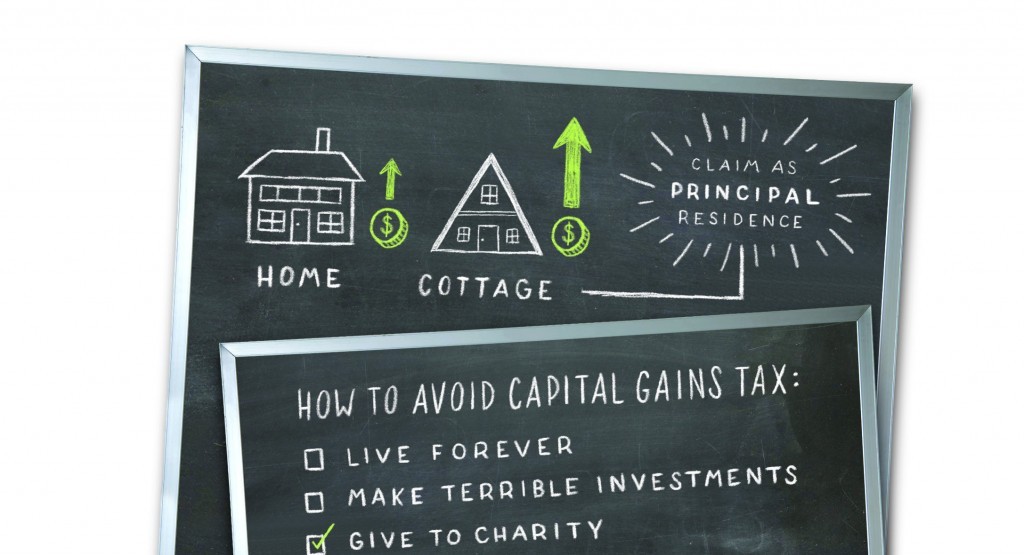How To Avoid Tax When Selling Rental Property
Post on: 9 Июль, 2015 No Comment

Unlike principal residence sellers, who can claim the generous new $250,000/$500,000 tax exemption after owning and living in their homes any two of the five years before sale, rental property sellers aren’t so well off under the 1997 Tax Act.
- Starker exchanges make property trades easy. In 1984, Internal Revenue Code 1031(a)(3) created Starker exchanges (named for the first person to successfully complete a delayed tax-deferred exchange). Before 1984, to defer profit tax, one property had to be directly traded for another qualifying property.
Today, all that’s required for Starker tax deferral is that the owner of rental property (any property held for investment or use in a business can qualify) sells the property, has the sales proceeds held by a third-party intermediary beyond the trader’s constructive receipt, and uses the cash to buy a qualifying replacement property. Within 45 days after the old property’s sale closes, the trader must identify the property to be acquired. Up to 180 days can be used to complete the acquisition.
- Why exchange? Owners of apartments, rental houses, stores, warehouses, offices, farms and vacant land held for investment can defer tax by trading for other like kind property of equal or greater cost. But the up-trader cannot receive any unlike kind property, called boot (such as cash or net mortgage relief), which is taxable.
The tax law views like kind exchanges as one continuous tax deferred real estate ownership. But like kind does not have to mean same kind.
For example, an owner of one or more rental houses can make a tax-deferred Starker exchange for a warehouse, apartment building, or office building. But your personal residence cannot qualify for a tax-deferred exchange.
- The three kinds of tax-deferred exchanges. There is no limit to the number of properties in a tax-deferred exchange. For example, you might wish to sell your five rental houses and consolidate your holdings by acquiring one apartment building. Or you can trade your warehouse for an office building. Perhaps you might like to swap your investment land for an income-producing warehouse.
To defer tax, the property value received must equal or exceed the property value given without taking out any taxable boot such as cash.
There are three kinds of tax-deferred trades:
1. Direct exchanges. Before 1984, when Starker exchanges became part of the tax code, most IRC 1031 tax-deferred exchanges were direct trades of one property for another property. But these exchanges were very difficult.
Usually, one owner didn’t want the property another owner offered in trade. For example, my first tax-deferred exchange involved trading my three-unit apartment building for a nine-unit apartment building.
2. Three-way exchanges. To solve the drawbacks of direct exchanges, three-way trades evolved. These swaps involved a direct exchange, such as my three units for the nine units, followed by an immediate cash out sale to a waiting prearranged buyer. That’s what happened in my first exchange. It was tax-deferred for me, since I was the up-trader, but taxable for the seller of the nine apartments, since he was the down-trader.
3. Starker delayed exchanges. Today, most tax-deferred property trades are Starker exchanges. More correctly, they are a property sale followed by a property purchase using the sales proceeds. Meanwhile, the sales proceeds must be held by a third-party intermediary, such as a bank trust department, beyond the up-trader’s receipt.
There are many small, independent firms that hold Starker exchange proceeds. Banks and title insurance firms also act as intermediaries.
- Watch out for two special exchange rules. Since 1989, two special exchange rules (1) forbid foreign real estate from qualifying for a tax-deferred exchange and (2) require a related recipient of the exchanged-property owner to hold the acquired realty at least two years, otherwise the deferred profit is taxed back to the relative who formerly owned the property.
When exchanging your way to wealth, be sure to consult your tax adviser or attorney for complete details.
Q—We recently completed a tax-deferred Starker exchange of our Northern Michigan rental cottage for a Florida golf villa rental. You may be surprised to learn that the most information we found on such trades was in your special report, How to Profit from Starker Tax-Deferred Exchanges. But no one seems to know how long our Florida investment condo must be rented until we can trade it for something in another area in Florida that we like better. If we use the Florida condo more than 14 days, or 10 percent of the rental days, per year, do we have to pay our deferred capital gains tax?
A—Nobody knows for sure how long a rental property must be rented after a tax-deferred exchange before it can be converted to personal use. The risk is that the IRS might say you acquired it with the intent to use it personally. Most CPAs advise their clients to rent the acquired property at least six months to one year after acquisition. I wish I could be more helpful, but there is no definite answer to your often-asked question.














